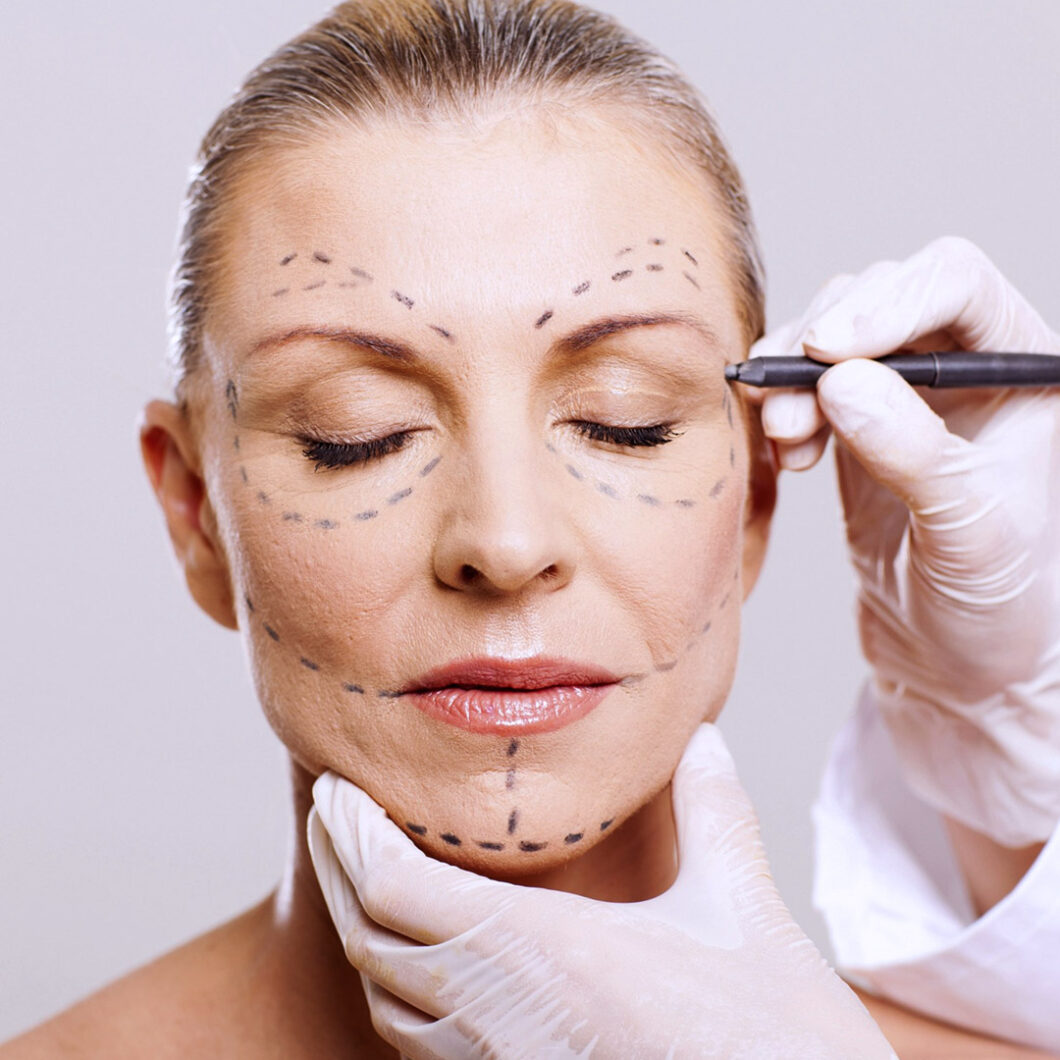Understanding the Basics of a Facelift
A facelift, clinically known as rhytidectomy, is a cosmetic surgical procedure aimed at reducing signs of aging in the face and neck. This procedure is designed to tighten the skin, muscle, and underlying tissues, resulting in a more youthful appearance. There are various types of facelift techniques, each catering to different aesthetic goals and patient needs. The most common types include traditional facelifts, mini facelifts, and non-surgical options.
The traditional facelift involves making incisions along the hairline, extending around the ear, and may also include some work on the neck. This method allows for substantial tightening and repositioning of the skin and deeper tissues, addressing sagging cheeks, jowls, and minimizing wrinkles. On the other hand, mini facelifts offer a less invasive alternative for patients seeking mild rejuvenation effects. This procedure targets specific areas with shorter incisions, resulting in less downtime while still achieving refined results.
Non-surgical facelifts have gained popularity as they utilize injectable fillers or neuromodulators to reduce wrinkles and restore volume without the necessity for invasive surgery. Popular procedures such as Botox and dermal fillers contribute to facial rejuvenation by plumping areas that have lost volume over time, though results may not be as dramatic or long-lasting as surgical options.
The typical facelift journey begins with a comprehensive consultation, during which the surgeon assesses the patient’s facial structure and discusses desired outcomes. Subsequently, preparation efforts ensure optimal conditions for the procedure. The surgery itself takes several hours, typically performed under general anesthesia, followed by a period of recovery that varies based on the extent of the surgical work done. Post-operative care is crucial to the healing process, with patients often advised to avoid strenuous activity until fully healed.
Understanding these elements of facelift procedures provides a solid groundwork for evaluating their potential effectiveness in rejuvenating one’s appearance.
The Benefits of a Facelift in Rejuvenation
A facelift, also known as rhytidectomy, is a surgical procedure aimed at enhancing facial aesthetics by addressing signs of aging. One of the primary benefits of a facelift is its ability to restore facial symmetry. As individuals age, the skin tends to lose its elasticity, resulting in uneven facial features. A facelift can effectively reposition and tighten these sagging areas, yielding a more harmonious appearance.
In addition to improving symmetry, facelifts significantly enhance skin tightness and elasticity. The surgical technique involved removes excess skin and tightens the underlying muscles, creating a rejuvenated facial contour. Patients can expect not only a smoother skin texture but also improved definition of the jawline and cheeks. This rejuvenation can help mitigate the visual effects of aging, presenting a more youthful version of oneself.
Furthermore, facelifts can dramatically reduce the presence of sagging skin, which is often a major concern for many individuals desiring a more youthful look. The procedure focuses on the lower two-thirds of the face, smoothing out deep folds and creases around the mouth and nose. This targeted approach helps restore volume to areas that may have lost plumpness over time.
The benefits of a facelift extend beyond mere physical transformations. Many patients report experiencing significant psychological and emotional improvements post-procedure. Enhanced self-confidence often follows a facelift, as individuals feel more satisfied with their appearance. According to a study published in the Aesthetic Surgery Journal, over 90% of facelift patients stated they were pleased with their results, affirming the procedure’s potential to improve overall quality of life.
In summary, the advantages of a facelift encompass not only aesthetic enhancements such as symmetry, tightness, and contour improvement but also profound emotional benefits that contribute to an individual’s overall well-being.
Limitations and Considerations of Facelifts
While facelift procedures can provide substantial improvements in facial appearance and offer a rejuvenated look, they are not without their limitations and considerations. One critical factor that influences the results of a facelift is the patient’s age. As skin naturally loses elasticity with age, individuals who undergo a facelift at an older age may not achieve the same results as younger patients. Additionally, skin type plays a significant role; patients with thicker skin may experience a different outcome than those with thinner skin due to varying responses to surgical techniques.
Lifestyle choices also contribute to the overall effectiveness of a facelift. Smoking, excessive sun exposure, and poor diet can hinder the healing process and affect the longevity of results. It is essential for individuals considering a facelift to evaluate their habits and make positive changes prior to undergoing surgery in order to optimize the outcomes.
Further, potential risks and complications associated with facelift procedures must be acknowledged. These may include scarring, infection, and asymmetry, all of which can diminish the benefits the surgery is intended to provide. Understanding these risks is crucial for making an informed decision regarding the procedure.
Moreover, it is important to recognize that a facelift is not a comprehensive solution for all signs of aging. While it effectively addresses sagging skin and wrinkles, it may not significantly improve skin texture or tone, which can be better treated through alternative rejuvenation methods such as chemical peels, laser treatments, or dermal fillers. Each of these options carries its benefits and limitations, and exploring them can provide a broader context for individuals seeking facial rejuvenation.
The Future of Facial Rejuvenation Techniques
The field of facial rejuvenation is undergoing significant transformation, driven by advancements in technology and an increasing demand for less invasive treatments. As individuals seek solutions that provide noticeable results with minimal recovery time, a variety of emerging trends are reshaping the landscape of cosmetic procedures. Non-surgical options like dermal fillers and neurotoxins have gained popularity, allowing patients to achieve subtle enhancements without the need for traditional surgery.
One notable technique is the use of injectables, which can restore volume and smooth out fine lines effectively. Hyaluronic acid fillers, for instance, have become widely adopted due to their versatility and immediate results. These substances not only enhance facial contours but also promote a youthful appearance. In addition, Botox remains a staple in facial rejuvenation, targeting expression lines and significantly reducing the signs of aging. The integration of these treatments is often referred to as the “liquid facelift,” providing a non-invasive alternative that appeals to a wide demographic.
Beyond injectables, advances in laser treatments have redefined skin rejuvenation. Technologies such as fractional CO2 lasers and microneedling equipped with radiofrequency have emerged as powerful modalities for addressing skin texture and tone. These procedures stimulate collagen production and improve skin elasticity, offering a long-term solution to early signs of aging. Patients now have access to a range of laser options tailored to their specific needs, enhancing the effectiveness of rejuvenation efforts while minimizing downtime.
Moreover, innovative surgical techniques continue to evolve, making traditional facelifts safer and more effective. Methods such as endoscopic facelifts utilize smaller incisions and less invasive approaches, which may lead to quicker recovery times and more natural-looking results. As research progresses, the future of facial rejuvenation techniques indicates a greater emphasis on personalization, allowing practitioners to design treatment plans that align with individual aesthetic goals.

